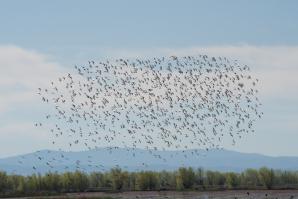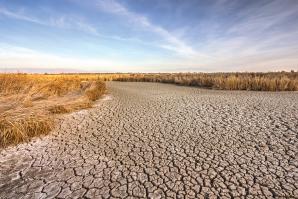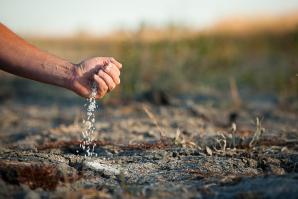Years of drought have baked away some of the divisions inside California’s Capitol, drawing opposing parties together in an effort to find solutions to the state’s ongoing water storage and conveyance problems. In March, Rep. John Garamendi (D-Walnut Grove) and Rep. Doug LaMalfa (R-Richvale), united to propose a new reservoir in Northern California that would add flexibility to the state’s water management system by providing storage for roughly 1.8 million acre-feet of water.
The Sites Reservoir would be a large-scale offstream reservoir in the Sacramento Valley that would collect water from the Sacramento River and pump it into an artificial lake west of Colusa. This potential project of the California Department of Water Resources would provide about 500,000 acre-feet of water for use.
Sounds promising, but it’s still just a proposal. In fact, discussions about using this site for a reservoir date back to the 1960s. If passed, the latest federal legislation would authorize a feasibility study and construction of the reservoir with a potential operating date of 2019.
Support from the Capital Region is stronger than ever. With ongoing, repeat droughts and a rising population, water storage advocates say time — much like water — should not be wasted.
“We cannot conserve our way out of a multiple-year drought,” says Tim Johnson, president and CEO of the California Rice Commission. “We need more tools in the toolbox. We need options when years are dry.”
Sites Reservoir is just one storage option. Other active bills on the Congressional table include raising Shasta Dam, expanding the San Luis Reservoir and building a dam on the Upper San Joaquin River at Temperance Flat.
But the Sites Reservoir project (a pumped-storage hydroelectric plant, similar to San Luis Reservoir) shows the most potential, Johnson says. To begin, the reservoir, which would be twice the size of Folsom Lake, would be constructed in an ideal location in the dry, barren hills of the Antelope Valley. There is no river there, and therefore, fish migration would not be affected. Water stored during the rainy season would support agriculture, urban uses and the Delta.
The total project cost is estimated at $2.3 to $3.2 billion, depending on conveyance options, according to the Department of Water Resources.
In recent years, the debate about whether to move forward with the project has centered on whether investing in a reservoir is a better bet than funding groundwater storage. Johnson doesn’t see it as an either/or scenario, though the answer could depend on the geography of a given region. The San Joaquin Valley, for instance, might be better served by groundwater options than would the Sacramento Valley.
Storage options, however, should not supplant efforts to conserve. Regarding water conservation, Johnson believes the locals, not policymakers, will affect more change by taking small steps like turning off faucets and watering lawns more strategically. He gives credit to cities like Los Angeles and other areas in northern Sacramento Valley for spreading that awareness.
“These folks are ratcheting down, decreasing water use by 20 or 30 percent,” he says. “It’s probably going to be these people who are not entrenched in politics who step up. It’s going to be people on the urban side, my friends and neighbors, who say, ‘I care about farms, and I care about water for the environment.’”
Like what you’ve read? Check out our cover story by Russell Nichols, Of Rice and Men, by grabbing a copy of our August issue. You can also sign up for our newsletter and we’ll let you know when it’s available online.
Recommended For You

Water Foul
The drought is putting in jeopardy efforts to shore up migratory bird populations
Doug Thomas stops his white pickup along the elevated dirt road that carves through the acres of newly planted rice stalks in Wheatland, Calif.
In this scene, replete with a myriad of migratory birds lazily grazing in the green fields, change is soon to come. The landscape, Thomas says, will be transformed into an oasis for waterfowl and shorebirds that will find a man-made wetlands to call home on their annual migration this fall.

Dry Times
New water storage alone won't solve California's drought
California is in the third driest year in more than 100 years of record. Farmers throughout the state are seeing their water use curtailed, some communities are rationing water, and fish and wildlife populations are threatened. California needs additional storage capacity to weather such droughts, and it’s groundwater storage — not surface storage — that will have the greatest impact. Still, storage alone won’t be enough.

Of Rice and Men
On the Cover: Parched by years of drought, thousands of California’s rice fields lie barren
In the Sacramento Valley, where 97 percent of the state’s rice crop is grown, family farmers have been forced to fallow cropland they have worked for generations. The economic hit has been hard and true, affecting not just farmers, but seed distributors, equipment dealers and anyone else with a thumb in the rice business. The drought could cost Central Valley farmers and communities $1.7 billion this year and may lead to more than 14,500 layoffs.

Change of Plans
Regional conservation efforts battle dwindling budgets and staff
The future of community growth in the Capital Region hinges on the fate of several habitat conservation plans slogging through the development pipeline.




Comments
We all need to do our part to conserve plus!!!!!
Wild and Scenic River designations serve to eliminate any options for storage, whether on stream or off, due to the frequently used caveat language of "no potential for adverse effect on the free flowing condition" of the river. This occurs whether the river is indeed "free flowing", or heavily regulated by "flow regimes" negotiated in FERC licensing agreements.
Domestic conservation is important, of course. (For the record, we used below the state average but still reduced our usage 57% on our last water bill compared to 2013.) Increased storage capacity cannot catch rain that never falls. Agriculture uses the lion's share of California water. Our farmers will need to find ways to reduce their water usage, if we are all going to survive.
The Sites Reservoir site... last time I was there, 22 years ago, I was taking photos of my baby in fields of gorgeous wildflowers, with the beautiful oak-studded hills as a backdrop. Makes me tremendously sad to think of this area underwater, for minuscule gain. Especially considering that so much more could be gained by: 1) conservation; and, 2) accepting the fact that most of California is desert or near-desert...and altering our expectations of it's agricultural productivity accordingly.